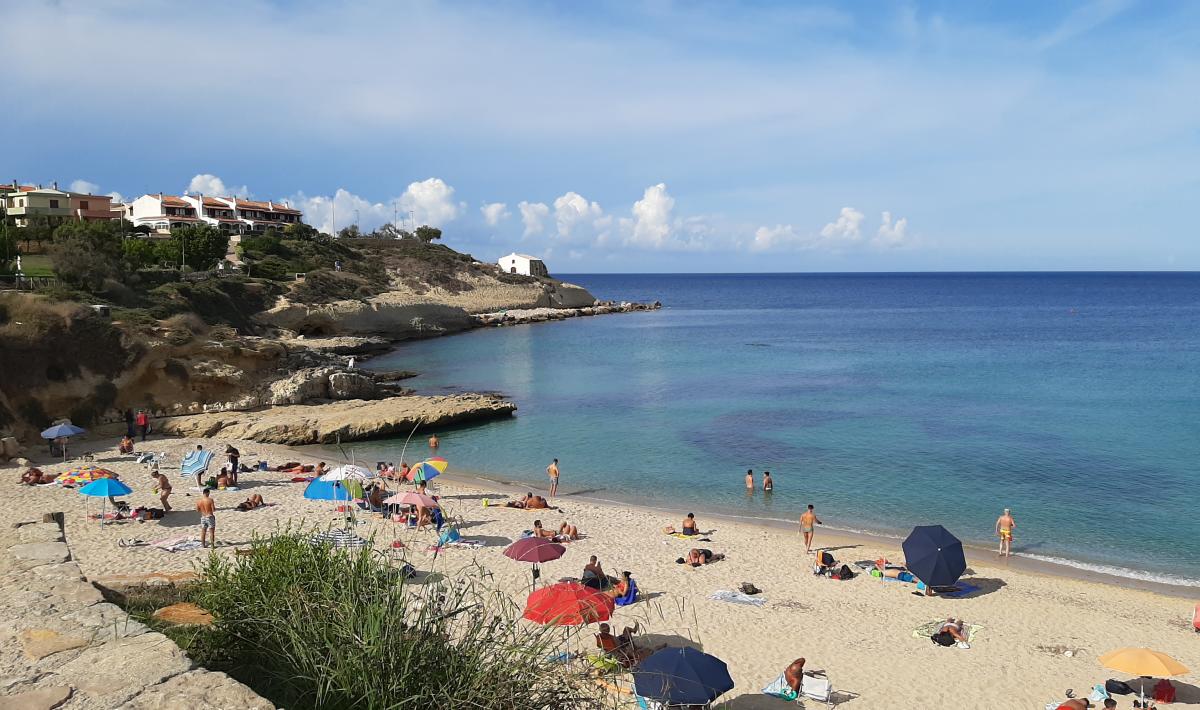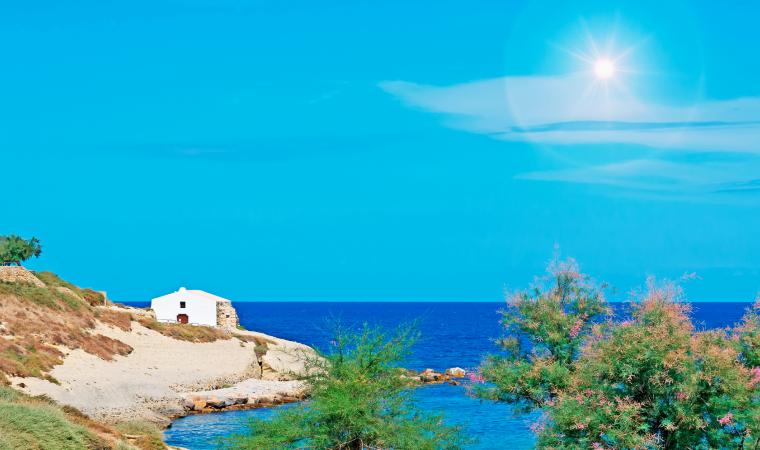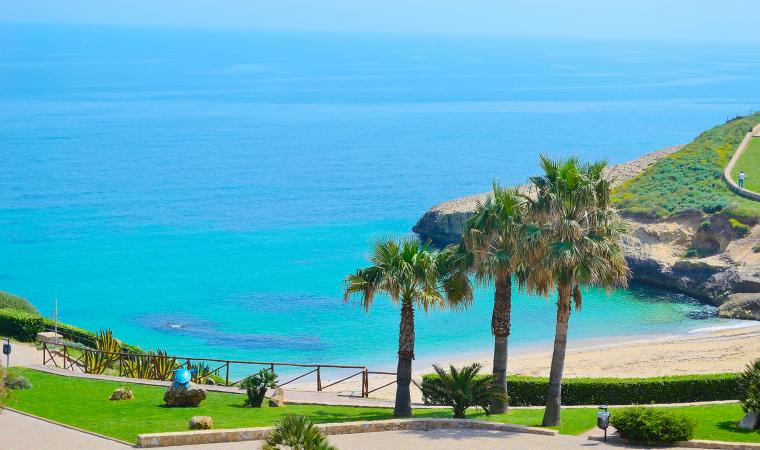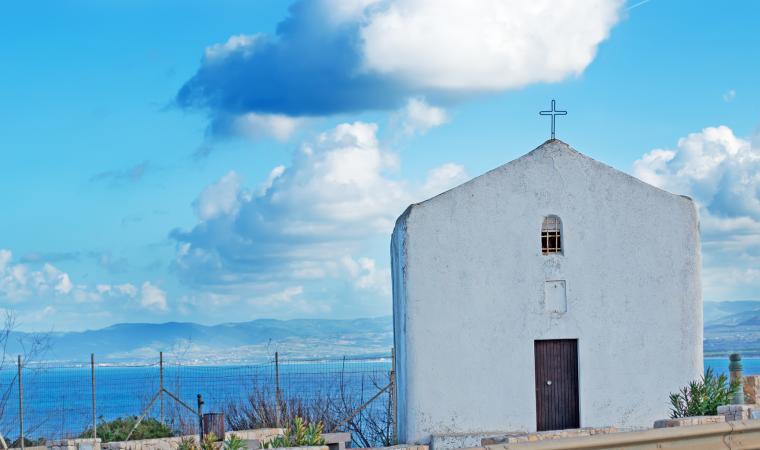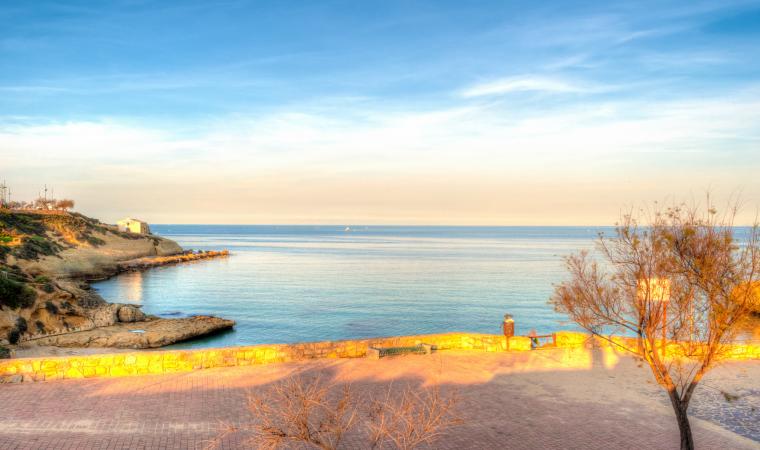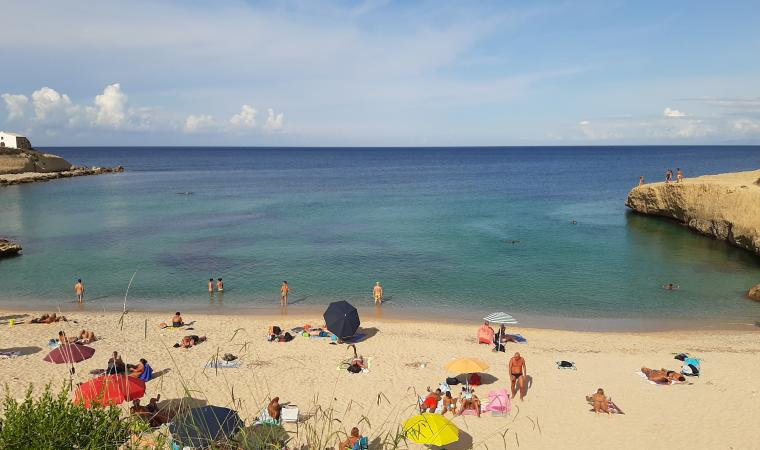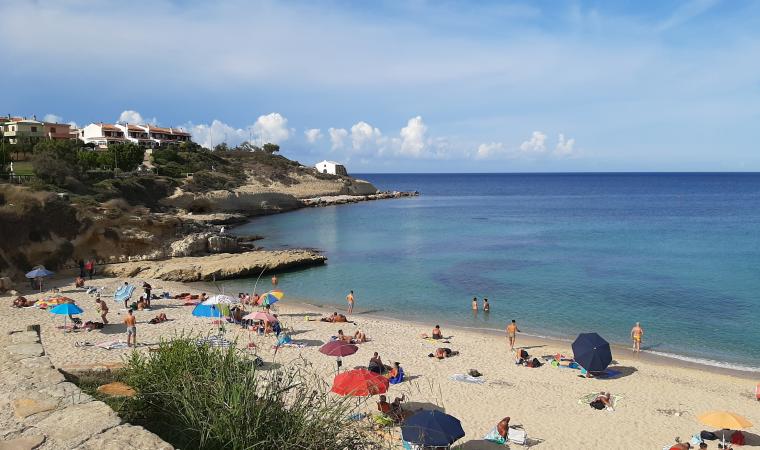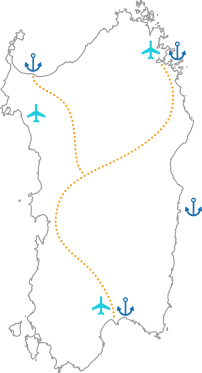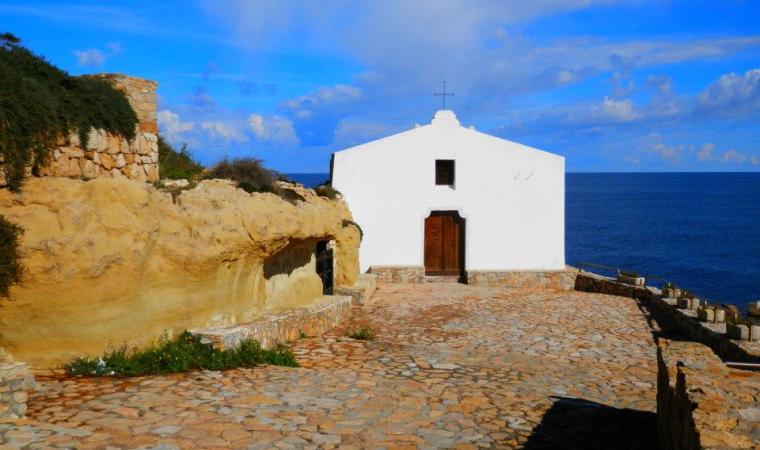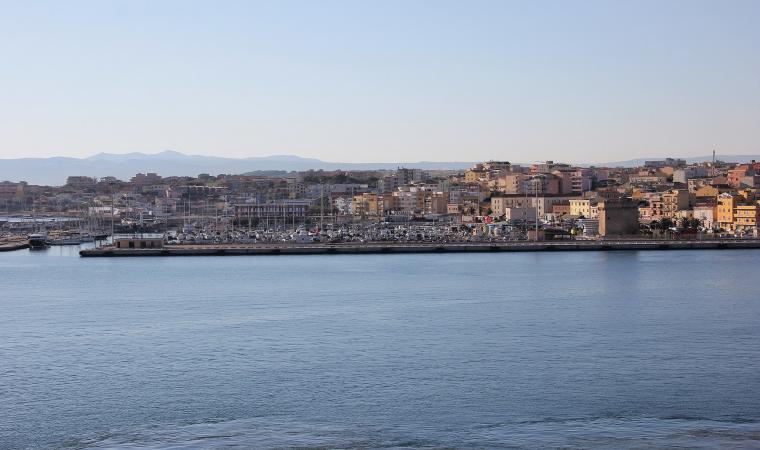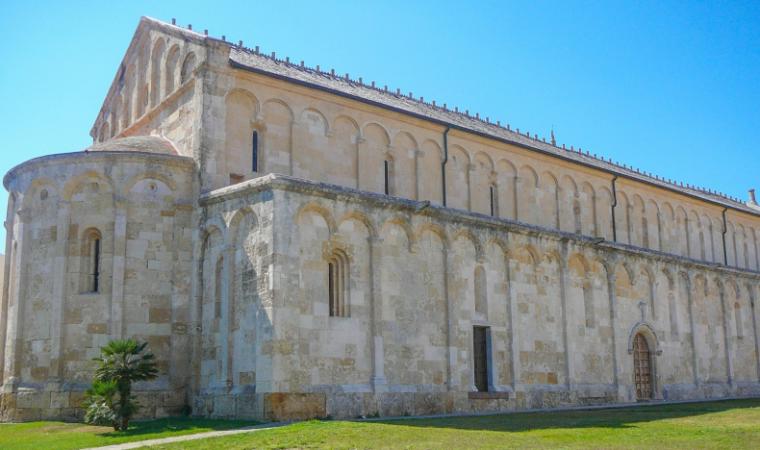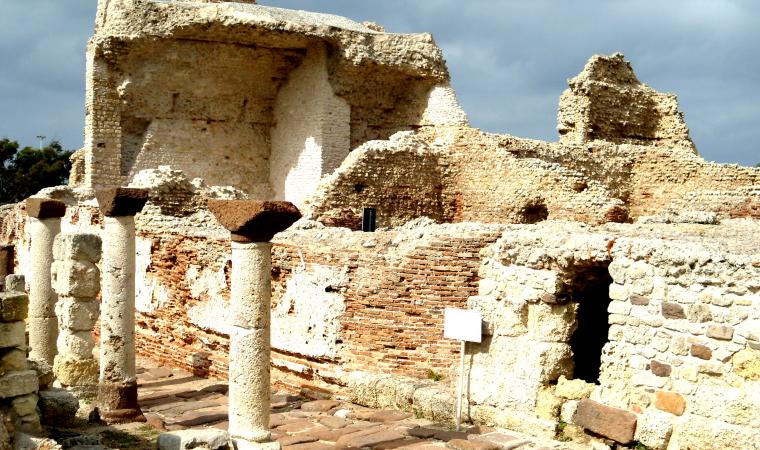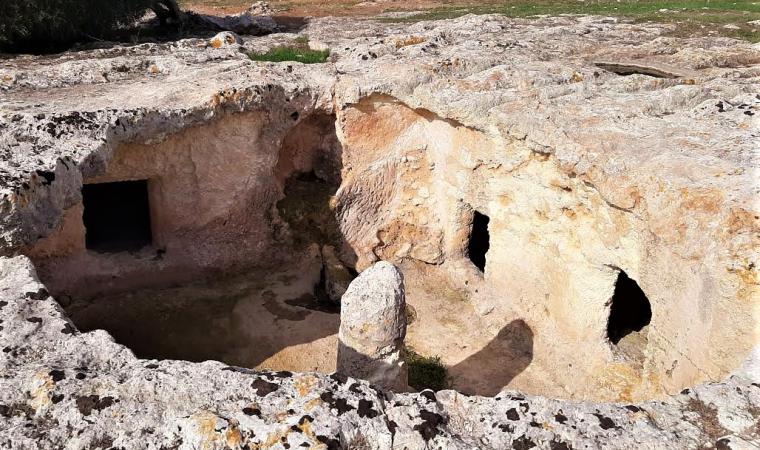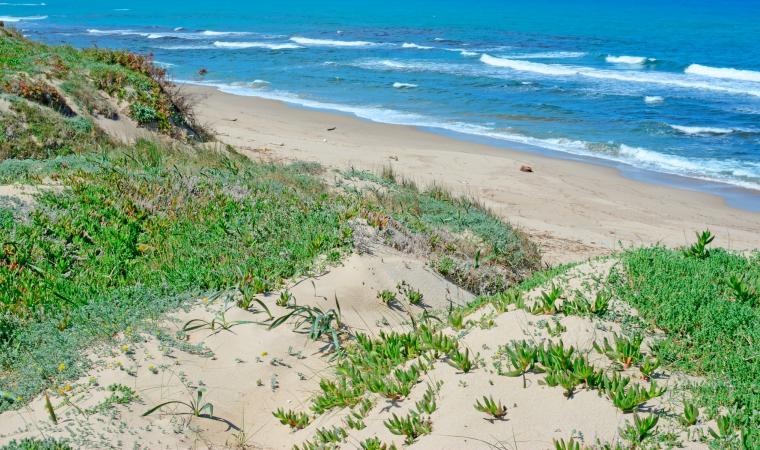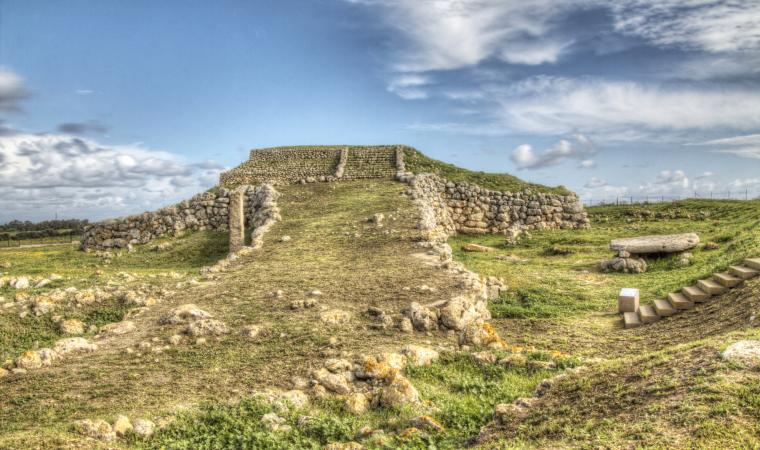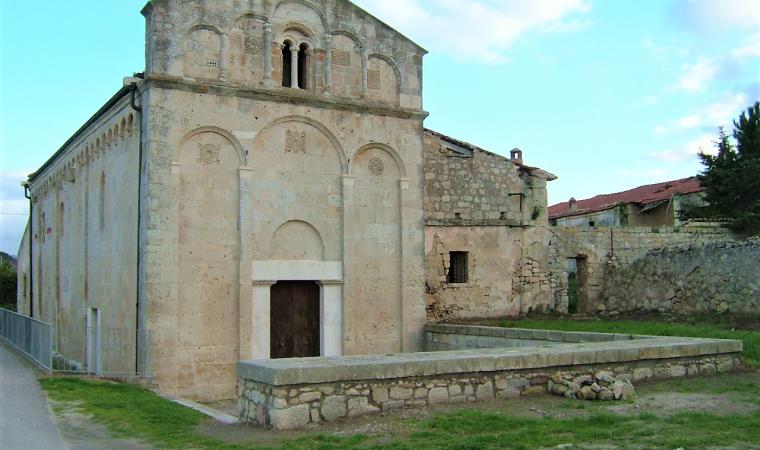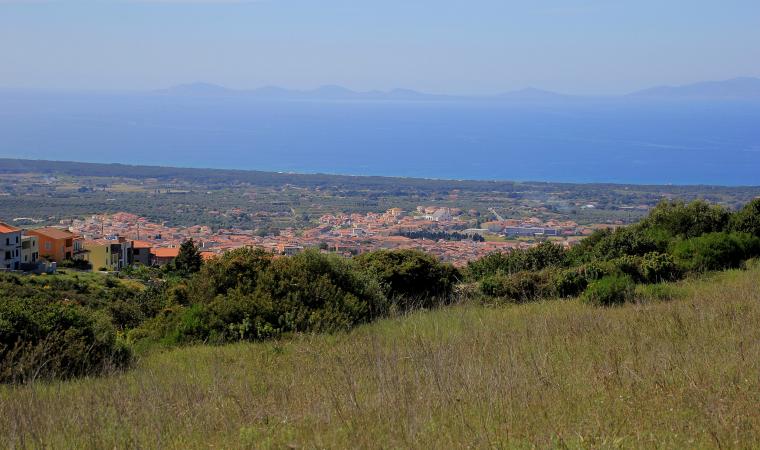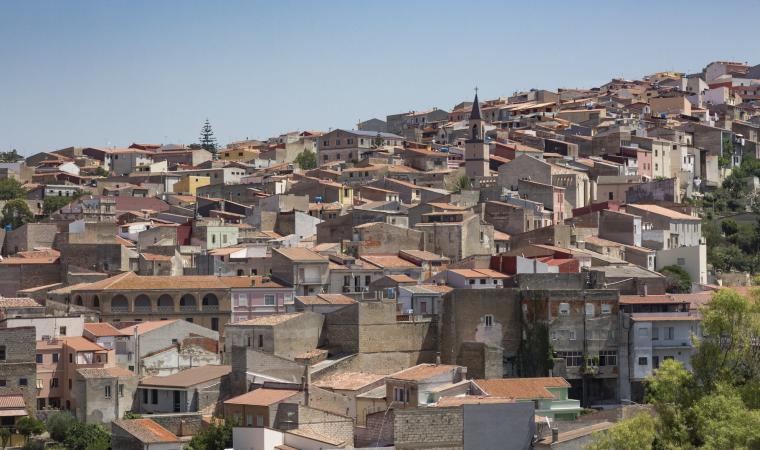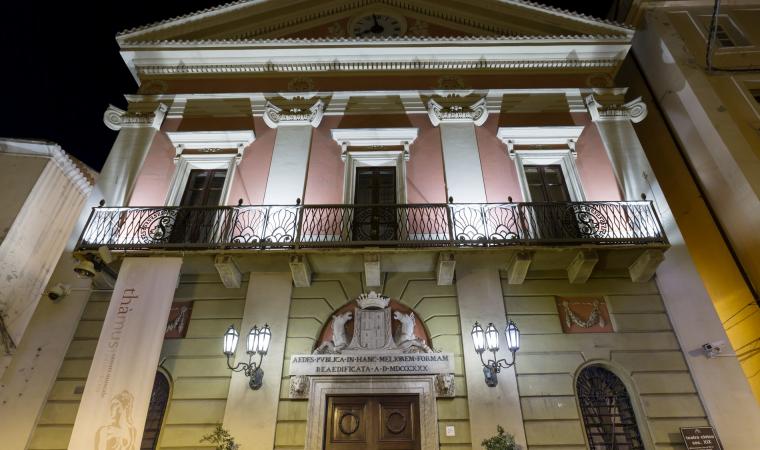A charming little cove, sheltered by limestone cliffs and framed by spectacular scenery. The soft golden sand, the crystal clear water, the bright colours of the sea, the white rocks and the lush green park behind it make Balai the most beautiful and popular beach in Porto Torres, a town in the centre of the Gulf of Asinara. The beach, of sand mixed with little pebbles, is just a hundred metres long and, therefore, it’s often crowded in the summer. It is famous for an unusual tradition, the New Year’s Day swim. You will find it in the eastern outskirts of the town, on the Cristoforo Colombo promenade, one kilometre from the centre. It's worth visiting all year round, for pleasant walks along the pedestrian and cycle path that runs alongside the Porto Torre coast and, passing by Balai and the other small city beaches - Renaredda and Scoglio Lungo -, it stretches to the beginning of the very long (eight kilometres) and wide beach of Platamona, with a pond and pine forest around its border.
The seabed in Balai is sandy and the waters are almost immediately deep, with a few rocks on the edges, ideal for snorkelling. The limestone reefs that surround it, pierced by small caves, are an attraction for expert divers. The best-known point is the Rocca manna. Close to the beach is the Chico Mendes park, with palm trees, lawn, aromatic plants and colourful flowers, almost suspended over the cove. In the surrounding area, you will find numerous services for bathing, bars and restaurants.
To the west of the bay, standing on a sheer cliff, is the small church of San Gavino A Mare, better known as Balai vicino, which is where the beach gets its name. The sanctuary, was built in the mid-19th century, has a simple structure, without an apse or bell tower, and a bare, very white façade, contrasting with the emerald green sea. It stands next to a cave used as a tomb, where, according to tradition, the martyrs of Turrita, Saints Gavino, Gianuario and Proto were buried. Moving on for a kilometre along the coastal road, you will come across another small church, named San Gavino Decapitato (St Gavinus beheaded) or Balai lontano (distant Balai), with a single nave. It is said that the two sanctuaries were built, respectively, in the place where the bodies of the three martyrs were thrown into the sea and in the place they were found. During the Festha manna, in May, their statues are carried in a procession that reaches Balai and starts from the splendid basilica of San Gavino, the oldest – built in 1060 – and biggest Romanesque church in Sardinia, as well as the symbol of Porto Torres, in which the remains of the three saints are kept.
From Porto Torres, you can reach the Asinara National Park by ferry, where you can discover the island's natural heritage and secular history. Nature and history are often intertwined in the Porto Torres area. Today's main seaport in the north of the island has its ancestry in Turris Libisonis, the only colony in Sardinia composed exclusively of cives and possibly founded by Julius Caesar himself. Excavations have unearthed the ruins of monuments - thermal baths, domus with mosaics, porticoes and tabernae -, which can be visited in the archaeological park inside the city, and countless artefacts, kept in the Antiquarium Turritano museum. Outside the city, ‘spanning’ the rio Mannu, is the biggest bridge built by the Romans on the Island (1st century AD), 135 metres long and still standing almost intact. The main prehistoric site is the necropolis of su Crucifissu Mannu, with 22 domus de Janas dating back to the 4th-3rd millennium BC, while the most important piece of medieval evidence, after the basilica of San Gavino, is the Aragonese Tower, built between 1323 and 1326 at the behest of Alfonso V of Aragon.

